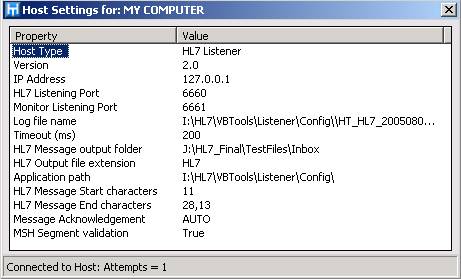
|
Advanced Monitor Functions |
Previous Top Next |
When actively monitoring a service the advanced monitor functions become available. These allow you some limited control over the service you are monitoring for the purpose (usually) of troubleshooting problems that may arise. Two of these advanced functions appear under the 'Remote Controls' section of the main window.

remote controls section when active
Pause Host:
A click on this button will 'Pause' the service you are monitoring. In the case of Listeners, the service will not accept inbound HL7 messages from the sending application(s). In the case of Routers, the service will stop sending HL7 messages to receiving applications. After you click the button, the caption will change from 'Pause Host' to 'Resume Host', clicking this will cause the service to resume processing. Monitor communication is not affected by the 'Pause' state of the host service.
Start Logging:
Clicking this will cause the service you are monitoring to switch to 'debug' mode and begin writing a substantial amount of connection and traffic information into a log file. On a busy system, this can add up quickly so the system will only write information to the log file until it reaches the size defined when the service was set up. *NOTE* Logging can be a useful tool for diagnosing problems, but it's a very 'expensive' process in terms of CPU usage and processing speed. When you activate the logging feature you will likely notice a slight degradation of performance speed in the listener service.
The other functions are located in the 'Tools' menu and are:
View Host Settings:
Clicking this menu option will show you the configuration information of the service you are monitoring.

example host settings window